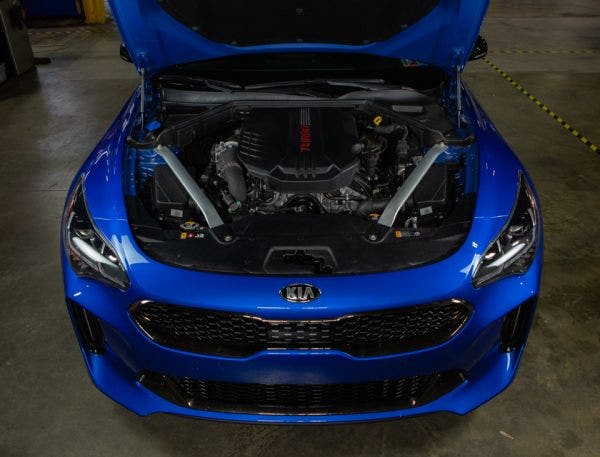
Lasting Impression - Direct Fit Catch Can Kit R&D, Part 1 - Concept and Design
And they're off! In the proverbial footrace that is the luxury sports sedan market, there have always been a select few "mostly of the German variety" obvious front runners. While Kia/Hyundai has previously tried to place in this race, they've always seemed to fall short. They've typically fallen in line with the general commuter car vibe. That all changes with the Stinger GT. This new entry gives the KDMs a much-needed boost of energy to add some contention to the competition and a bit of clout to what others might have once considered a run-of-the-mill brand. Kia may have caught up, but for how many miles can this new image last?

The Lambda II T-GDI 3.3L isn't Kia/Hyundai's first venture into direct fuel injection. In fact, the Korean conglomerate took the plunge into atomizing gasoline in the cylinders of their V6 engines around the same time as their German counterparts. This is, however, their first venture into coupling a GDI V6 with a pair of turbochargers. By now, it's a well-known fact that direct injection, especially with the introduction of forced induction, leaves the intake valves susceptible to carbon buildup thanks to the natural byproduct of the combustion process" blow-by.

Where Volkswagen and BMW worked on devising built-in air/oil separators (or a walnut blasting maintenance plan if you're BMW) into their PCV systems, Kia's has yet to go that far. The fuel and oil mixture flows freely from the crankcase through the intake where it sets up shop on the Stinger's valves. When it comes to the endurance run, this buildup could take the wind out of the Stinger's sails, robbing the once athletic engine and turning it into a couch potato.

Much like how we helped with those same German PCV systems, Mishimoto is acting as the Stinger's personal trainer to make sure it doesn't get out of shape. With the help of one our compact catch cans, we're planning to capture any blow-by making its way through the intake system and prevent the Lambda II from getting winded.

The first step in creating this kit is having a proof of concept. For that, Ye jumped in on developing a prototype kit the day after we drove it back to the R&D facility. Luckily, Kia made a very effective use of engine bay space, meaning that Ye quickly mounted one of our compact cans close to the PCV system and had the Stinger back on the road. Since we're constantly testing this Stinger on the road, and eventually on the dyno, we wanted to be sure that there wasn't any blow-by sneaking through on the CCV side either. We made sure to rig up a compact can in line with that side of the crank case ventilation as well.

While the Stinger was away, the engineers went and played. The prototype bracket keeps the can in place while we run our preliminary tests, but it's not a good look in the engine bay. During the road testing, Ye got down to business working on an application-specific bracket that would look more at home under the Stinger's hood while bringing some durability to stand the test of time.

This isn't a sprint, but more of a marathon. Just to make sure that our catch can will work properly, we need to send the Stinger out for at least 1000 miles on the road. We're already deep into that process and will have more to share coming very soon. Stay tuned for updates!

Thanks for Reading!
-Nick




